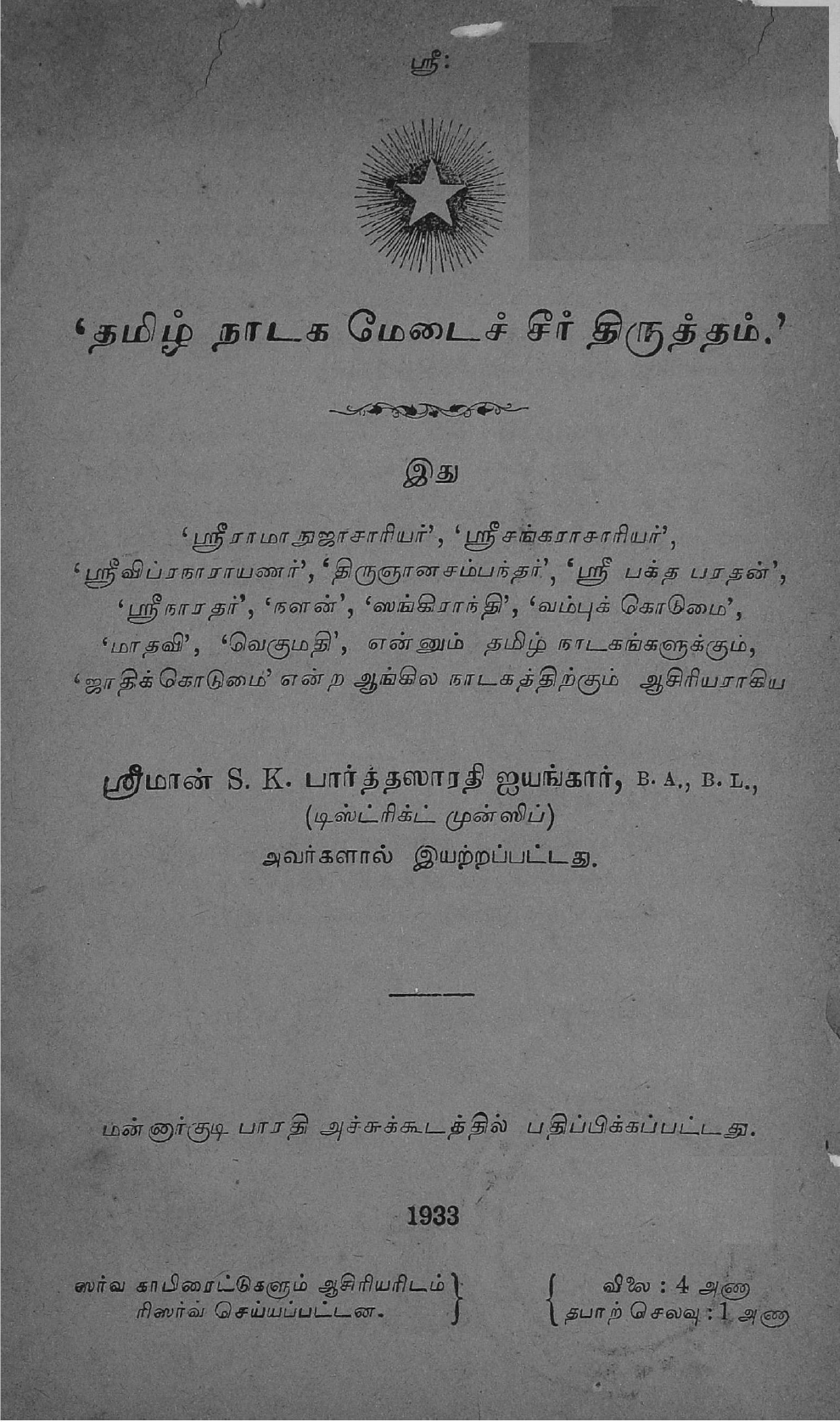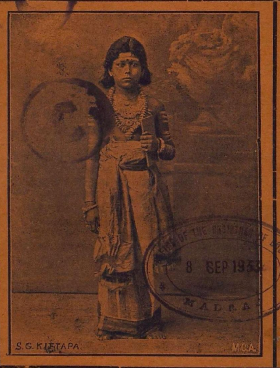Despite the fact that children have been an integral part of the Tamil theatre, especially in the early decades of the 20th century, when the Boys Company movement (where actors were aged between 4 and 13) was at its peak, there have been very few plays for them. Though short skits were written and performed on radio, there were hardly any stage plays for children. An attempt was made in 1955, when the Kuzhandhai Ezhuthalar Sangam organised a drama festival that featured many short plays for children by writers such as Bhaktavatsalam, Poovannan and Koothapiran. It, however, took a man best known for his productions based on historical subjects, T.K. Shanmugam, to stage a full-length children’s play, Appavin Aasai. The play was written by journalist and playwright Trichy Bharathan.
Born in September 1934, Bharathan took a keen interest in children’s literature, inspired by noted writer Azha Valliappa. He even won a prize for his essay on the importance of moral stories for children in a competition organised by Pooncholai, a popular magazine then. He wrote several songs and stories for children, and Appavin Aasai, dealing with the travails of a young boy and his family, was one such. Bharathan sent it to a couple of magazines, but they did not evince any interest. Destiny, however, had other plans.
Bharathan received a call from All India Radio, Tiruchi, asking for a children’s story running to a duration of 30 minutes. He submitted Appavin Aasai after making a few modifications. It was serialised and broadcast over three Sundays and was well received by listeners. One of the listeners, Suba Natesan, who was the head of the Pudukkottai Tamil Nilayam, suggested that it be brought out in the form of a book. Additions were made to the story and the book was brought out by the Tiruchi Writers Association.
When TKS met Bharathan
Upon hearing that T.K. Shanmugam was looking to stage a play for children, Bharathan sent him a copy of the book. Shanmugam went to Tiruchi to meet Bharathan and discuss the book, and invited him to Madras to work on the screenplay and dialogue. Bharathan has recounted this interaction in an article in the Sankaradas Swamigal Centenary souvenir and it makes for interesting reading.
Bharathan writes that he received a warm welcome by Shanmugam at his home on Lloyds Road. Arrangements had been made for him to write the screenplay at a hotel, although Shanmugam suggested it could be done on the terrace of his house, under his supervision. Bharathan decided to write on the terrace. Each day’s writing session began with a discussion of the scene, after which the dialogues were written. Shanmugam and his brother Bhagavathy took Bharathan along when they went to watch plays in the evenings and introduced him to artistes. Sometimes they would have extensive discussions on that evening’s play, which proved to be a great learning experience for Bharathan.
Appavin Aasai, which was supported by the Tamil Nadu Iyal Isai Nataka Manram through a grant of Rs. 3,000, was inaugurated in June, 1965, at NKT Kala Mantap, Triplicane. The play had a mix of children and adult artistes. Justice K.S. Venkatraman of the Madras High Court presided over the inauguration with several dignitaries such as advocate K. Balasubramania Iyer and actor and political leader D.V. Narayanaswamy in the audience.
The play was a grand success. In its review, the Sport and Pastime magazine commended the ‘charming performances of the juvenile artistes’ and credited the TKS brothers for their rigorous training. It made a special mention of the lead artiste, a young boy of about 11, who ‘gave a heart-warming performance with subdued acting’. This boy was no newcomer to acting, he had appeared in a few films as a child artiste. He went on to become one of Indian cinema’s shining stars. His name is Kamal Haasan.
This article was written for the Friday Review supplement of The Hindu.




